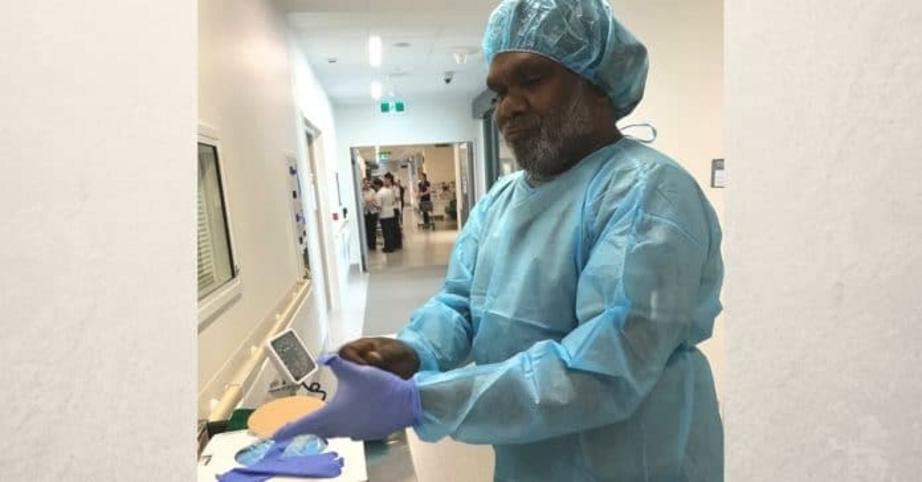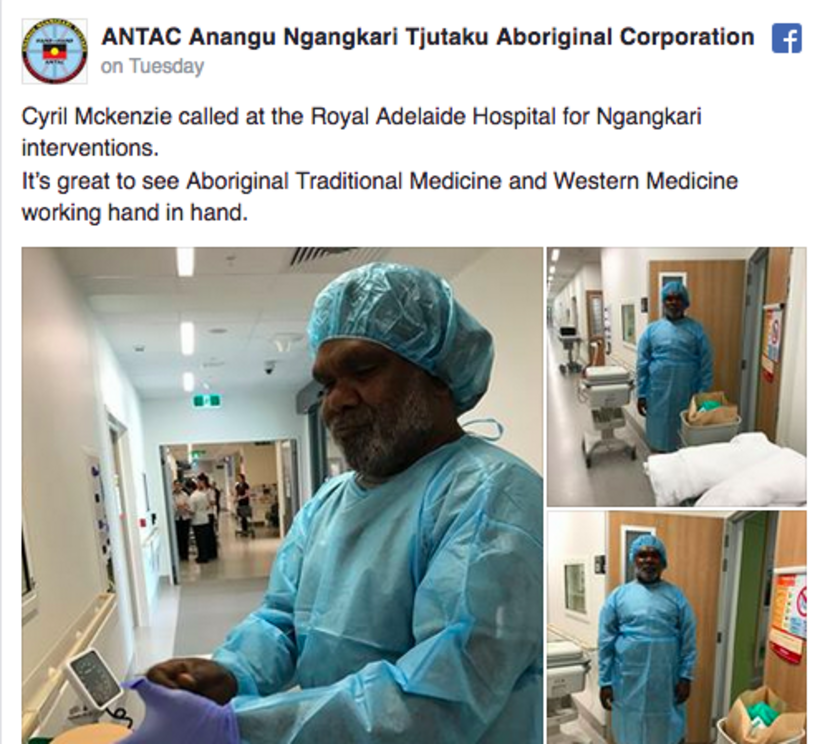Meet the Traditional Aboriginal Healers working inside Australia’s hospitals
Impressive results of Traditional Aboriginal Healers are starting to gain the attention and respect of western health professionals.

Cyril Mckenzie (Ngangkari/Traditional Healer) at the Royal Adelaide Hospital
In South Australia, a policy of cultural respect in the public health system strives to allow Indigenous patients to request a Traditional Aboriginal Healer known locally as ‘Ngangkari’. Healers have been working among Aboriginal communities for thousands of years and although the practices may not be well known, the practice has never stopped.

In 2012, a group of Ngangkari came together to form ANTAC, Anangu Ngangkari Tjutaku Aboriginal Corporation. This was the first official organisation of healers in Australia. The group comes from the Central Desert APY Lands and are hoping their work will inspire other Indigenous healers from around Australia to do the same.
Ngangkari use traditional natural medicines to cure ailments, which is similar to the manner western medicine works but without medicines made in a lab. Their work also involves massage and connection techniques that are less understood by western health workers. And when traditional healers talk about putting a persons spirit back in place, western health workers are often left feeling clueless. No matter how different the techniques may be, the results speak for themselves and their biggest advocates are the people they treat.
Since their formation, the healers have begun outreach work that has taken them from the APY Lands to several Australian towns and cities where they connect with Indigenous and non Indigenous patients. Some of the patients have described how the healers have x-ray vision and are able to find problem areas without being told what the problem is.
One of the biggest drivers of the formation of ANTAC was Francesca Panzironi. She is an Italian researcher who is aiming to bring Australia up to speed with Indigenous healing/medical practices found in other countries such as New Zealand and Canada. When she first came to Australia she was shocked to discover that these traditional practices remained largely ignored by the Australian government and health professionals.
ANTAC believes traditional healers can play a vital part in the effort to close the gap in health outcomes between Indigenous and non Indigenous people in Australia. To this day, that is yet to happen as the government’s previous approaches failed to bring Indigenous groups into the decision making process.
With the recent admission of failure in closing the gap policies, perhaps now is the time to raise the profile of ANTAC’s Ngangkari. Ngangkari don’t aim to replace western medicine, they complement the work of western doctors and bridge the gap of understanding of Indigenous patients and illnesses that are associated specifically to our lands.
If you are wondering how you can help raise the profile of ANTAC, you can start by sharing this article. Don’t forget to like and follow ANTAC on Facebook as well. Not only can Traditional healers lead Australia in a new direction with Closing the Gap policies, they will also be promoting a valuable source of employment to recognised healers from around Australia.
